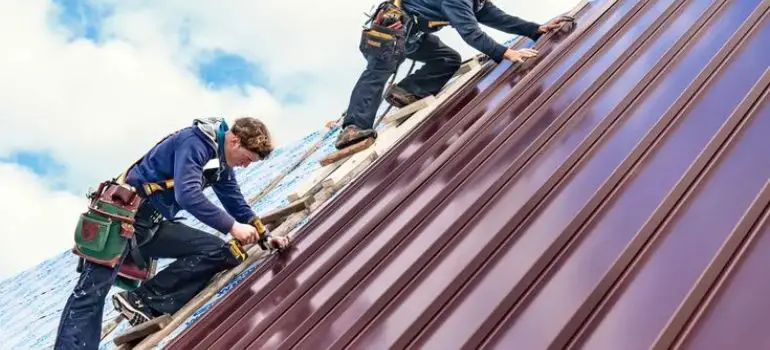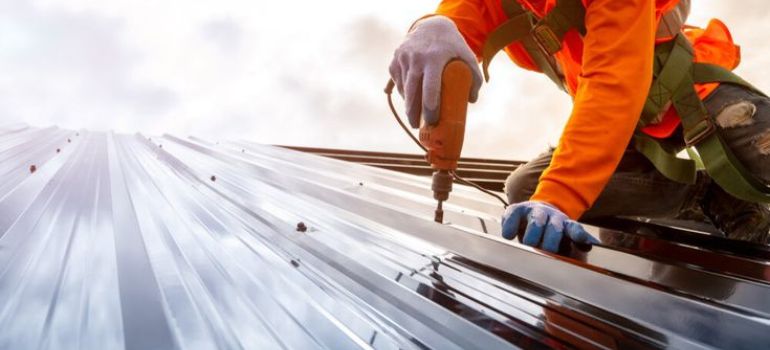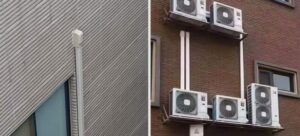Introduction
When it comes to maintaining your home, one of the essential tasks is ensuring that your roof remains in excellent condition. Over time, screw holes in your roof can become a source of potential leaks and damage. Whether you’re dealing with a minor issue or planning to tackle a larger project, sealing screw holes in your roof is a critical aspect of roof maintenance. In this guide, we will walk you through the steps to effectively seal screw holes in your roof, ensuring the protection and longevity of your home.
Understanding the Importance of Roof Screw Hole Maintenance
Why Do Screw Holes Pose a Threat?
Screw holes are often created during the installation of various fixtures on your roof, such as satellite dishes, solar panels, or roof vents. Over time, these holes can become a pathway for water infiltration, leading to leaks, water damage, and even structural issues within your home.
The Consequences of Neglecting Screw Hole Repairs
Neglecting screw hole repairs can lead to a host of problems. These include:
Water Damage
Leaking water can damage your ceiling, walls, insulation, and even your home’s foundation.
Mold and Mildew Growth
Moisture from leaks can create an ideal environment for mold and mildew to thrive, posing health risks to your family.
Energy Loss
Unsealed screw holes can allow air to escape or enter your home, impacting your energy bills.
Materials You’ll Need
Before you start sealing screw holes in your roof, gather the following materials:
Tools:
- Screwdriver
- Caulk gun
- Putty knife
- Safety goggles
- Gloves
Materials:
- Roofing sealant (compatible with your roof type)
- Roofing screws (if needed)
- Roofing nails (if needed)
- Roofing cement
Step-by-Step Guide to Sealing Screw Holes
Now that you have your materials ready, let’s get started on sealing those troublesome screw holes:
Step 1: Safety First
Before beginning any work on your roof, prioritize safety. Wear safety goggles and gloves to protect yourself from potential hazards.
Step 2: Remove Old Sealant
Use a screwdriver or putty knife to gently remove any old sealant or debris from the screw holes.
Step 3: Inspect for Damage
Examine the screw holes and the surrounding area for any signs of damage, such as rust or deterioration. If you notice any issues, make necessary repairs before proceeding.
Step 4: Apply Roofing Sealant

Using a caulk gun, apply roofing sealant generously around the screw hole. Ensure that you completely cover the hole and create a tight seal.
Step 5: Reattach Fixtures
If you had to remove any fixtures to access the screw holes, reattach them securely using roofing screws or nails. Make sure they are properly sealed as well.
Step 6: Final Inspection
After completing the sealing process, conduct a final inspection to ensure that all screw holes are adequately sealed and that no gaps or cracks remain.
Additional Tips for Roof Maintenance
In addition to sealing screw holes, there are some general roof maintenance tips you should keep in mind to extend the lifespan of your roof:
Clean Your Gutters
Clogged gutters can lead to water overflow, which can seep under your roof shingles and cause damage. Regularly clean your gutters to ensure water flows away from your roof as intended.
Trim Overhanging Branches
Overhanging branches from nearby trees can scratch and damage your roof during windy conditions. Trim branches to prevent them from coming into contact with your roof.
Check for Missing or Damaged Shingles
Inspect your roof for missing or damaged shingles, as they can leave your roof vulnerable to leaks. Replace any compromised shingles promptly.
Maintain Proper Attic Ventilation
Proper attic ventilation is essential for preventing excess heat and moisture buildup, which can damage your roof from the inside. Ensure your attic has sufficient ventilation to protect your roof’s structure.
Schedule Professional Inspections
Hiring a professional roofing contractor for regular inspections is a wise investment. They can identify potential issues early and recommend necessary repairs or maintenance.
Common Mistakes to Avoid
While sealing screw holes in your roof is essential, it’s equally important to avoid common mistakes that can compromise the effectiveness of your efforts:
Using the Wrong Sealant
Using the wrong type of sealant can lead to poor adhesion and ineffective sealing. Always choose a roofing sealant that is compatible with your specific roof material and climate conditions.
Neglecting Regular Inspections
Don’t wait until you notice water stains on your ceiling to inspect your roof. Regular inspections can catch issues early, preventing extensive damage and costly repairs.
Rushing the Process
Take your time when sealing screw holes. Rushing can result in incomplete sealing, leaving gaps that can allow water infiltration.
Ignoring Safety Measures
Safety should always be a priority when working on your roof. Use appropriate safety gear, work on a dry day to avoid slipping, and never work alone.
Overlooking Professional Help
For complex or extensive roof issues, it’s best to consult with a professional roofing contractor. They have the expertise and equipment to handle more significant repairs and replacements safely and effectively.
Conclusion
Sealing screw holes in your roof is a crucial part of roof maintenance that should not be overlooked. By following these steps and regularly checking for potential issues, you can protect your home from water damage, mold growth, and energy loss. Remember, a well-maintained roof is essential for the longevity and safety of your home.
Frequently Asked Questions (FAQs)
Regularly inspect your roof at least once a year, especially after severe weather conditions, to ensure the integrity of your roof and seal any screw holes promptly.
No, it’s essential to use roofing sealant that is compatible with your roof type. Consult with a roofing professional if you’re unsure about the right sealant to use.
While it’s best to properly seal screw holes, you can use roofing cement as a temporary solution until you can make permanent repairs.
For more extensive roof repairs or replacements, it’s advisable to hire a professional roofing contractor to ensure the job is done correctly and safely.
Signs of a roof leak may include water stains on your ceiling, peeling paint, mold growth, and musty odors. If you notice any of these signs, inspect your roof immediately.



